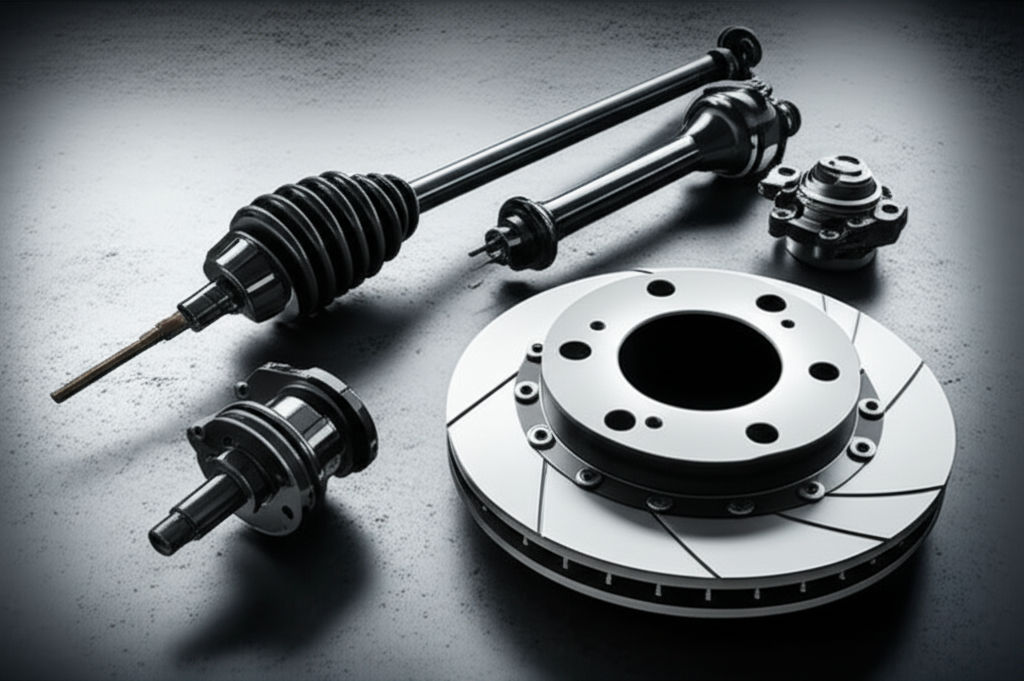Child Car Seat Safety: Installation Tips & Rules
Ellie Moore

Photo: Child Car Seat Safety: Installation Tips & Rules
Child Car Seat Safety: Installation Tips & Rules
Ensuring your child’s safety is a top priority, and a properly installed car seat is a critical step in protecting them during travel. However, with countless models and rules to consider, it’s easy to feel overwhelmed. This comprehensive guide will walk you through essential tips and rules for installing a child car seat, ensuring compliance with regulations, and optimizing safety.
Why Child Car Seat Safety Matters
Car accidents are one of the leading causes of injury and death among children, and proper car seat usage significantly reduces these risks. According to the National Highway Traffic Safety Administration (NHTSA), car seats can reduce the risk of injury by 71% to 82% for children, depending on their age. Yet, data reveals that nearly 60% of car seats are not installed correctly, putting children in unnecessary danger.
Let’s explore how you can avoid common mistakes and ensure your child’s car seat is both safe and compliant.
Types of Car Seats and Their Importance
1. Rear-Facing Car Seats
- Best for: Infants and toddlers (birth to around 2–4 years or when the child outgrows the seat’s weight/height limits).
- Why: Rear-facing seats offer better support for a baby’s head, neck, and spine in a collision.
2. Forward-Facing Car Seats
- Best for: Toddlers and preschoolers (after they outgrow rear-facing seats, typically 2–5 years).
- Features: Harness systems that distribute crash forces across a child’s stronger upper body.
3. Booster Seats
- Best for: School-aged children (typically 5–12 years or until they reach 4'9").
- Purpose: Positions the seat belt correctly across the child’s chest and lap.
4. Seat Belts
- Best for: Older children and adults (when the seat belt fits properly without a booster).
Essential Car Seat Installation Tips
1. Read the Manual
Each car seat comes with a detailed instruction manual, and your vehicle has specific recommendations for car seat installation. Familiarize yourself with both to avoid compatibility issues.
2. Use the Right Installation System
Modern car seats offer two main methods of installation:
- LATCH System (Lower Anchors and Tethers for Children): Common in newer vehicles, this system simplifies installation by securing the car seat using anchor points.
- Seat Belt Installation: In older cars or when the LATCH weight limit is exceeded, use the vehicle’s seat belt to secure the car seat.
3. Ensure Proper Tightness
- Test: Once installed, the seat should not move more than an inch in any direction when tugged at the base.
- Tip: Use your body weight to push down the car seat while tightening straps or the seat belt.
4. Adjust Harness Straps
- Rear-Facing Seats: Harness straps should be at or below your child’s shoulders.
- Forward-Facing Seats: Straps should be at or above shoulder level.
- Ensure the harness is snug you shouldn’t be able to pinch any excess webbing.
5. Positioning the Chest Clip
The chest clip should sit at armpit level to keep the harness securely in place.
6. Angle Matters
- Rear-Facing Seats: Ensure the seat is reclined at the correct angle to prevent airway obstruction. Most seats come with angle indicators or adjusters.
- Tip: Use a rolled towel or pool noodle to achieve the right angle if necessary.
Rules and Recommendations by Age Group
Infants (Birth to 1 Year)
- Use a rear-facing seat.
- Never place a rear-facing seat in front of an active airbag.
- Regularly check the seat’s fit as your baby grows.
Toddlers (1–4 Years)
- Continue using a rear-facing seat until the child outgrows its limits.
- Transition to a forward-facing seat with a harness when appropriate.
Preschoolers and Young Children (4–12 Years)
- Use a forward-facing seat until they exceed its height/weight limit.
- Switch to a booster seat to ensure proper seat belt fit.
Older Children (Over 12 Years)
- Use a seat belt when it fits snugly across the chest and lap without assistance.
- Children under 13 should always sit in the back seat for maximum safety.
Common Installation Mistakes to Avoid
- Using an expired car seat: Always check the expiration date, as materials degrade over time.
- Skipping the tether: Forward-facing seats must use the tether to secure the top of the seat.
- Incorrect seat belt routing: Follow the path marked on the car seat.
- Loose harness straps: Ensure the harness fits snugly against your child’s body.
Bonus Tips for Optimal Safety
- Register Your Car Seat: Stay informed about recalls or safety updates by registering your car seat with the manufacturer.
- Seek Professional Help: Visit a local car seat inspection station or certified Child Passenger Safety Technician (CPST) for a free installation check.
- Winter Warning: Avoid bulky clothing under harness straps use blankets over the harness instead.
- Regular Checks: Reassess the fit of the car seat every few months or after any significant changes, like switching vehicles.
Frequently Asked Questions (FAQs)
Q1. How do I know when my child is ready for a booster seat?
Your child is ready for a booster seat when they outgrow the forward-facing seat’s height or weight limit (usually 40–65 pounds). The child should also be mature enough to sit correctly without slouching.
Q2. What’s the safest location for a car seat?
The back seat, particularly the center position, is generally the safest spot. It keeps the child farther from potential side-impact collisions.
Q3. Can I reuse a car seat after an accident?
It depends on the severity of the crash. Consult your car seat manual or contact the manufacturer for guidance.
Q4. Do car seats expire?
Yes, most car seats expire within 6–10 years from the date of manufacture. Check the label or manual for specific information.
Final Thoughts and Call to Action
Child car seat safety is not just a legal requirement it’s a lifesaving commitment. By selecting the right seat, following installation guidelines, and staying informed about the latest safety standards, you’re providing your child with the best protection possible.
Got questions about your car seat setup? Leave a comment below or share this article with fellow parents. For more tips on keeping your family safe on the road, explore our related guides!
Finance & Investment
View All
June 22, 2025
Thruster Finance Helping Businesses Grow FastMaster expert SEO content! Go beyond keywords to build trust, authority, and top Google rankings. Discover E-E-A-T strategies for impactful content.
Ellie Moore

March 16, 2025
Finance Manager Success TipsCraft expert SEO content for higher rankings & engaged readers. Discover how to create valuable, authoritative content that satisfies E-E-A-T & builds trust.
Ellie Moore

October 17, 2025
Top Honda Finance Offers 2025Unlock 2025 search dominance! Discover how to create expert SEO content that builds trust, authority, and ranks high with E-E-A-T principles.
Ellie Moore

June 9, 2025
Easy Pay Finance Pros and Cons You Should KnowMaster expert SEO content! Learn Google's E-E-A-T framework to build authority, drive organic traffic, and achieve top visibility.
Ellie Moore

June 25, 2025
Arkansas Department of Finance and Tax TipsUnlock higher rankings & organic traffic with expert SEO content. Learn to craft valuable, E-E-A-T aligned content that builds authority & engages readers.
Ellie Moore

September 3, 2025
Manufactured Home Financing OptionsGo beyond keywords! Discover Expert SEO Content, focusing on Google's E-E-A-T to build trust, authority, and achieve lasting online success.
Ellie Moore
Insurance
View AllLearn how critical illness insurance offers financial protection during health crises. Get covered and stay secure!
Ellie Moore
Before you travel, get the essential tips for choosing the perfect travel insurance policy for peace of mind.
Ellie Moore
Safeguard your rental assets with Lemonade Renters Insurance. Get smart, comprehensive, and affordable coverage for ultimate peace of mind.
Ellie Moore
Maximize your complete dental insurance. This definitive guide empowers policyholders, agents, & risk managers to optimize coverage, ROI, and oral health.
Ellie Moore
Secure optimal auto insurance coverage and significant savings! Our guide helps you compare top-rated companies to beat rising premiums.
Ellie Moore
Safeguard your business's future. Essential Liability Insurance protects against legal claims, financial losses, and ensures continuity. Get peace of mind.
Ellie Moore
Education
View AllExplore how virtual reality is revolutionizing learning by providing immersive educational experiences. Ready to see VR in action?
Read MoreDiscover how assistive technology empowers special needs learners. Learn about tools that foster inclusivity and enhance educational outcomes.
Read MoreUnderstand dyslexia and discover effective ways to support dyslexic students in the classroom. Learn proven strategies to improve learning outcomes.
Read MoreOpen educational resources are breaking down barriers to knowledge. Learn how free learning materials are changing the global education scene.
Read MoreTake learning beyond the textbook with experiential education. Discover how real-world experiences create lasting knowledge and skills.
Read MoreStrong school-community partnerships can drive student success. Discover the benefits and strategies for effective collaboration.
Read MorePopular Post 🔥
View All
1
2
3
4
5
6
7
8
9
10
Health






Automotive
View All
August 27, 2025
Premium Automotive Services For High End Cars
Luxury & exotic cars demand premium care. Discover why specialized services are essential to preserve their performance, stunning aesthetics, and long-term valu...

August 29, 2025
Smoke Machine Automotive Uses And Benefits
Discover how automotive smoke machines revolutionize car repair! Easily find hidden leaks (vacuum, exhaust, EVAP) for precise fixes. Make the invisible visible!

August 4, 2025
Automotive Tinting Prices And What To Expect
Demystify car window tinting costs! Learn about types, benefits, and factors influencing prices to make an informed decision for your vehicle.

August 16, 2025
Automotive Holdings Group Limited Overview
Uncover the impact of Automotive Holdings Group (AHG) on Australia's car market, its rise, and its pivotal acquisition by AP Eagers.

July 19, 2025
What You Should Know About Semi Automotive Parts
Demystify semi-automotive parts! Learn what they are & why they're crucial for your vehicle's safety, performance, and longevity. Essential guide for car owners...

February 7, 2025
Car Subscriptions: The Future of Vehicle Ownership
Explore the rise of car subscription services. Find out how they work, pros & cons, and why they’re becoming the latest trend in mobility.

















